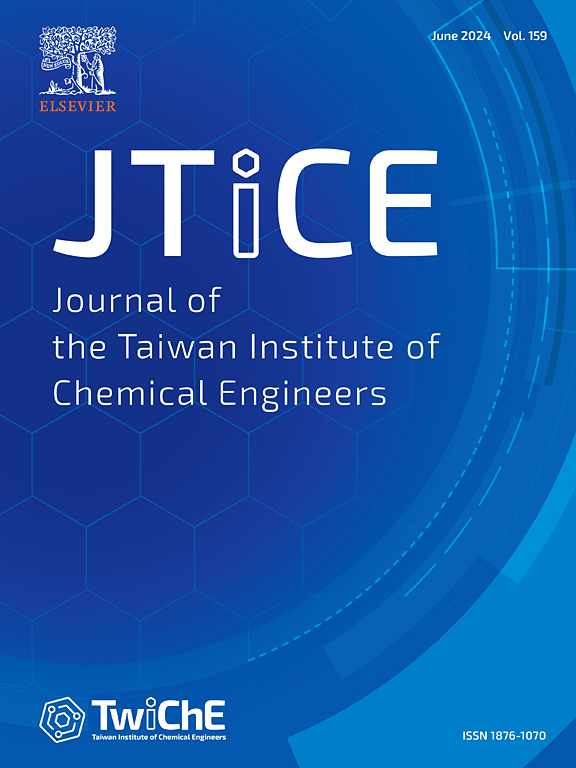A comprehensive analysis of Arum dioscoridis plant leaf extract as a corrosion inhibitor for mild steel in 1 M HCl: Synthesis, characterization, surface analysis observations, experimental and DFT studies
IF 5.5
3区 工程技术
Q1 ENGINEERING, CHEMICAL
Journal of the Taiwan Institute of Chemical Engineers
Pub Date : 2025-01-19
DOI:10.1016/j.jtice.2025.105955
引用次数: 0
Abstract
Background
Corrosion occurs wherever metal and its alloys exist. Protection of metals with corrosion inhibitor is a popular topic. Considering environmental concerns and human health, it is more favorable to use green corrosion inhibitors than traditional corrosion inhibitors. Methanol extract of Arum dioscoridis (AD) becomes a potential green corrosion inhibitor and it can be used in industrial areas.
Methods
Corrosion efficiency, corrosion behavior and corrosion mechanism of Arum dioscoridis leaf extract on mild steel (MS) are illuminated in 1 M HCl by Tafel curves, electrochemical impedance spectroscopy (EIS), linear polarization resistance (LPR), zero charge potential, structural and surface morphological analysis and density functional theory (DFT).
Significant findings
The extract function as mixed-type corrosion inhibitor with predominantly cathodic action. Inhibition efficiency was reached the value of 97 %. Polarization resistance is measured as 761 Ω cm2 at 1000 ppm of AD. The high inhibition efficiency was attributed to phytochemicals in the AD extract. A high activation energy (70.34 kJ/mol) for inhibited solution than that of in blank solution (49.66 kJ/mol). Both physisorption and chemisorption are responsible for formation of a protective layer on MS surface to inhibit the electrochemical reactions. Optimized molecular structures in phytochemicals confirmed the inhibitive properties via DFT.

求助全文
约1分钟内获得全文
求助全文
来源期刊
CiteScore
9.10
自引率
14.00%
发文量
362
审稿时长
35 days
期刊介绍:
Journal of the Taiwan Institute of Chemical Engineers (formerly known as Journal of the Chinese Institute of Chemical Engineers) publishes original works, from fundamental principles to practical applications, in the broad field of chemical engineering with special focus on three aspects: Chemical and Biomolecular Science and Technology, Energy and Environmental Science and Technology, and Materials Science and Technology. Authors should choose for their manuscript an appropriate aspect section and a few related classifications when submitting to the journal online.

 求助内容:
求助内容: 应助结果提醒方式:
应助结果提醒方式:


